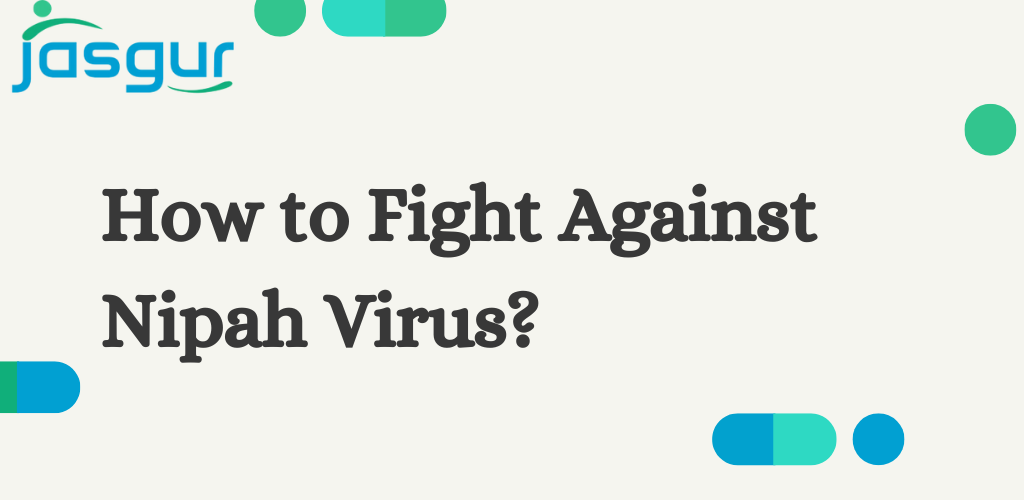Nipah virus is a zoonotic virus, means virus that can be spread between animal to people. It has been observed that Nipah virus rapidly infects most of the pigs and people. Fruits bats also known as flying foxes are the advantages for the NIV. NIV infection is associated with encephalitis (Brain swelling) can cause mild to severe illness and even death. Outbreaks occur almost annually in parts of Asia, primarily Bangladesh and India.

What you will do
Avoiding contact with sick pigs and bats in places where the virus is prevalent, as well as avoiding raw date palm sap that may have been contaminated by an infected bat, are two ways to prevent contracting the Nipah virus. In hospital settings, normal infection control procedures can aid in preventing person-to-person transmission during an outbreak.
Symptoms of Nipah Virus
Nipah virus can cause of mild severe diseases including sweilling in Brain (encephalitis) and Nipah virus can cause of death also.
Common symptoms of Nipah Virus
-
Fever.
-
Headache.
-
Breathing difficulties.
-
Cough and sore throat.
-
Diarrhea.
-
Vomiting.
-
Muscle pain and severe weakness.
The symptoms of Nipah Virus May be start between four to fourteen days first you may experience the common symptoms like headache and fever then develop respiratory problems like cough and breathing
Severe symptoms may follow, such as:
-
Disorientation, drowsiness, or confusion
-
Coma
-
Brain swelling (encephalitis)
-
Seizures
In 40–75% of cases, death is possible. Persistent convulsions and personality changes have been reported as long-term side effects in Nipah virus survivors.
There have also been reports of dormant or latent infections, which manifest symptoms and can result in death months or even years after exposure
How can I avoid Nipah virus infection?
Nipah virus, a dangerous illness transmitted from bats and pigs, may seem like a scary shadow in the night. Here is how?
-
Bats: These winged friends are the natural carriers of Nipah. Avoid direct contact or handling them, especially in areas with known outbreaks. Remember, even seemingly healthy bats can harbor the virus.
-
Pigs: Though less common, infected pigs can also transmit Nipah. Practice safe animal handling, wear gloves when dealing with them, and avoid contact with sick animals.
Follow this instructions
-
Date palm sap: This sweet treat can be contaminated by bat droppings or saliva. Always boil raw sap before consuming it to kill any potential virus.
-
Fruits: Wash and peel all fruits thoroughly, especially those found on the ground, to remove any bat-borne contaminants.
Hygiene Habits
-
Frequent handwashing: This simple act is one of the best ways to prevent any viral infection, including Nipah. Wash your hands with soap and water regularly, especially after contact with animals or potentially contaminated objects.
-
Personal protective equipment (PPE): If you're in close contact with sick animals or their body fluids, wear gloves, masks, and other protective gear to minimize exposure.
Treatment
There is no treatment for NIpah virus. But there is supportive care rest, hydration and treatment of symptoms.
How was Nipah virus controlled?
-
Public education: Awareness campaigns for communities on avoiding contact with infected bats, pigs, and contaminated food (like raw date palm sap).
-
Animal culling: In some cases, culling infected pigs can break the chain of transmission between animals and humans. However, this is a controversial measure with ethical and economic considerations.
-
Fruit tree protection: Measures like netting or scaring bats away from fruit trees can reduce bat-to-human transmission.
Can Mask Prevent Nipah Virus?
The Nipah virus, a deadly zoonotic disease transmitted from bats and pigs to humans, raises crucial questions about personal protective measures like masks. While mask efficacy can be helpful, it's essential to understand their limitations and combine them with other preventive strategies.
Limited Protection: Masks, especially surgical masks, offer partial protection against Nipah virus. They are primarily effective in filtering large droplets and splashes but may not completely block smaller airborne particles. Wearing masks, even surgical ones, can contribute to reducing community transmission by decreasing virus spread through droplets. This becomes crucial in outbreak situations.
Is there a vaccine for Nipah virus?
Nipah virus infection boasts a case fatality rate of 40-75%, a chilling statistic that underscores its lethality. This means that nearly half, and in some cases, three-quarters of infected individuals succumb to the virus's wrath. In comparison, the flu virus has a fatality rate of around 0.1%.
Beyond Mortality
While death tolls paint a grim picture, the consequences of Nipah virus extend far beyond mortality. Survivors often face long-term neurological complications, including seizures, personality changes, and even coma. These debilitating effects take a heavy toll on individuals, families, and healthcare systems.
The Threat is Real
Nipah virus isn't just a distant danger. Outbreaks, though thankfully not frequent, can occur with devastating consequences. Recent outbreaks in India and Bangladesh serve as stark reminders of the virus's potential to disrupt lives and communities.
Reasons for Concern
Several factors heighten the seriousness of Nipah virus:
-
No Vaccine or Cure: Currently, no commercially available vaccine or cure exists for Nipah virus, leaving healthcare professionals with limited options to manage infections.
-
Zoonotic Transmission: The virus jumps from animals (primarily fruit bats) to humans, making control and prevention challenging.
-
Fruit Bat Reservoir: The widespread nature of fruit bats, the natural reservoir for Nipah virus, presents a significant obstacle to eradicating the disease.
What Organs Are Affected by Nipah?
Nipah virus exhibits a special affinity for the brain, often leading to encephalitis, an inflammation of the brain tissue. This can manifest in:
-
Fever and headaches: Early warning signs that something sinister is brewing.
-
Confusion and disorientation: The virus disrupts neural pathways, leading to altered mental states.
-
Seizures and coma: In severe cases, the virus can trigger uncontrolled electrical activity in the brain, resulting in seizures and even coma.
Lungs in Distress
Nipah virus can also invade the lungs, causing:
-
Pneumonia: The virus inflames the air sacs in the lungs, making breathing difficult.
-
Acute respiratory distress syndrome (ARDS): In severe cases, fluid buildup in the lungs can lead to life-threatening respiratory failure.
Beyond the Brain and Lungs
While the brain and lungs are the primary targets, Nipah virus can also affect other organs, including:
-
Kidneys: The virus can damage the kidneys, leading to impaired filtration and potential kidney failure.
-
Liver: Liver inflammation and hepatitis are possible complications of Nipah virus infection.
-
Pancreas: In rare cases, the virus can affect the pancreas, leading to pancreatitis.
The Grim Reality
The widespread organ damage caused by Nipah virus contributes to its high mortality rate, estimated to be around 40-75%. Understanding the affected organs not only aids in diagnosis and treatment but also highlights the severity of this emerging threat.


Leave a reply
Your email address will not be published.